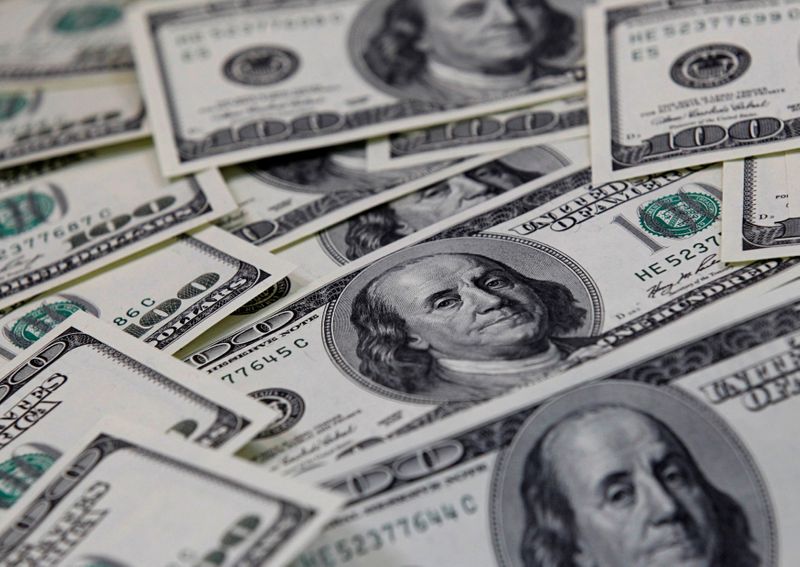NEW YORK (Reuters) – The dollar fell to two-week lows on Tuesday in choppy trading, led by losses against the yen and euro, as risk sentiment improved in the afternoon session amid stock market gains and as U.S. Treasury yields rose.
Bitcoin soared to a record high, headed toward the $50,000 milestone. It has surged more than 1,000% since March 2020 and analysts said forecasts of bitcoin hitting $100,000 this year no longer seem far-fetched.
Shares on Wall Street traded higher in the afternoon. Treasury yields rose from their lows as the dollar extended its losses [.N][US/]
“The FX market has been taking some of its cue from the equity market,” said Simon Harvey, senior FX market analyst at Monex Europe in London.
“There are heightened expectations that the actual stimulus package would be higher than expected. The Biden administration is going through reconciliation which means a less timely release of stimulus but a larger package,” he added.
The dollar has risen as Democrats in the U.S. Congress moved to fast-track President Joe Biden’s $1.9 trillion COVID-19 relief package. But some analysts say massive fiscal spending and continued ultra-easy Federal Reserve monetary policy will ultimately be a broad headwind for the dollar.
U.S. benchmark 10-year U.S. Treasury yields rose to near March 2020 highs on Monday as investors bet on a faster economic recovery than many of peers. U.S. 10-year yields were last 1.16%.
The dollar index was 0.6% lower at 90.54, after earlier hitting a two-week low.
Disappointing U.S. jobs data on Friday knocked the wind out of a two-week run that had lifted the dollar to a more than two-month high of 91.60.
Shaun Osborne, chief FX strategist, at Scotiabank in Toronto said dollar losses at this point were a little premature, “especially as positioning indicators suggest that active traders continue to reduce what remains a fairly significant U.S. dollar short exposure.”
(Graphic: USD-POSITIONS: https://fingfx.thomsonreuters.com/gfx/mkt/yxmvjxoogvr/USD%20positions.JPG)
BLISTERING BITCOIN
Cryptocurrencies were the biggest beneficiary of the weakening dollar. Bitcoin rocketed above $48,000, building on a nearly 20% surge overnight after Tesla Inc announced a $1.5 billion investment in the digital asset.
The Japanese yen was another major beneficiary, rising 0.6% against the U.S. dollar to 104.69 yen. Earlier, the dollar fell to a two-week low of 104.50 yen.
The yen has become increasingly correlated with outright yields rather than an indicator of broad risk sentiment. A 90-day rolling correlation between yen and U.S. yields has strengthened considerably since the final quarter of 2020.
Elsewhere, the euro rose 0.5% to $1.2104 on Tuesday, up from a two-month low of $1.1952 touched Friday.
The British pound climbed to $1.3816, its highest since May 2018. It last traded up 0.6% at $1.3811.
(Reporting by Gertrude Chavez-Dreyfuss; Editing by Edmund Blair and David Gregorio)


















